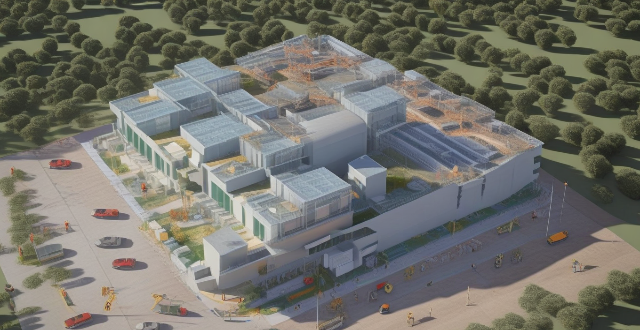Retrofitting existing buildings for energy efficiency involves several strategies, including conducting an energy audit, upgrading insulation, installing energy-efficient windows and lighting systems, optimizing HVAC systems, using energy-efficient appliances, implementing water-saving measures, sealing air leaks, investing in renewable energy sources, and encouraging energy-conscious behavior. These steps can lead to cost savings, increased comfort, and reduced environmental impact.

Retrofitting Existing Buildings for Energy Efficiency
Retrofitting existing buildings for energy efficiency is a crucial step in reducing carbon emissions and achieving sustainability goals. There are several strategies that can be employed to improve the energy efficiency of existing buildings, ranging from simple upgrades to more comprehensive renovations. Here are some key steps to consider when retrofitting a building for energy efficiency:
1. Conduct an Energy Audit
Before embarking on any retrofitting project, it is essential to conduct an energy audit to identify areas where energy is being wasted. An energy audit will help determine which systems or components need upgrading or replacement and provide a baseline for measuring the effectiveness of the retrofitting efforts.
2. Upgrade Insulation
Proper insulation is critical in maintaining comfortable indoor temperatures while reducing heating and cooling costs. Upgrading insulation in walls, ceilings, floors, and around windows and doors can significantly improve energy efficiency.
3. Install Energy-Efficient Windows
Replacing old windows with energy-efficient ones can reduce heat loss and gain, leading to lower heating and cooling bills. Look for windows with high R-values and low U-factors, as well as those with low-emissivity (low-E) coatings to reflect solar heat.
4. Improve Lighting Systems
Upgrading to LED lighting can reduce energy consumption by up to 80% compared to traditional incandescent bulbs. Additionally, incorporating daylighting strategies, such as skylights and light tubes, can reduce the need for artificial lighting during the day.
5. Optimize HVAC Systems
Heating, ventilation, and air conditioning (HVAC) systems are often the largest consumers of energy in buildings. Upgrading HVAC systems to more efficient models, installing programmable thermostats, and improving ductwork insulation can significantly reduce energy usage.
6. Use Energy-Efficient Appliances and Equipment
Replace old appliances and equipment with Energy Star-rated models to reduce energy consumption. This includes refrigerators, dishwashers, washing machines, and office equipment like printers and copiers.
7. Implement Water-Saving Measures
Water heating accounts for a significant portion of a building's energy usage. Installing low-flow fixtures, such as showerheads and faucets, and upgrading to energy-efficient water heaters can reduce both water and energy consumption.
8. Seal Air Leaks
Air leaks around windows, doors, and other penetrations can cause significant heat loss or gain. Sealing these gaps with weatherstripping, caulking, or spray foam insulation can improve energy efficiency and comfort.
9. Invest in Renewable Energy Sources
Installing solar panels or wind turbines can generate clean energy on-site, reducing reliance on fossil fuels and lowering utility bills. While these investments may have higher upfront costs, they can provide long-term savings and contribute to a greener environment.
10. Encourage Energy-Conscious Behavior
Educating occupants about energy-saving practices, such as turning off lights when not in use and setting thermostats at optimal temperatures, can lead to further energy savings. Providing feedback on energy usage through submetering or smart building management systems can also encourage more conscious behavior.
By implementing these strategies, existing buildings can be retrofitted for improved energy efficiency, resulting in cost savings, increased comfort, and reduced environmental impact.